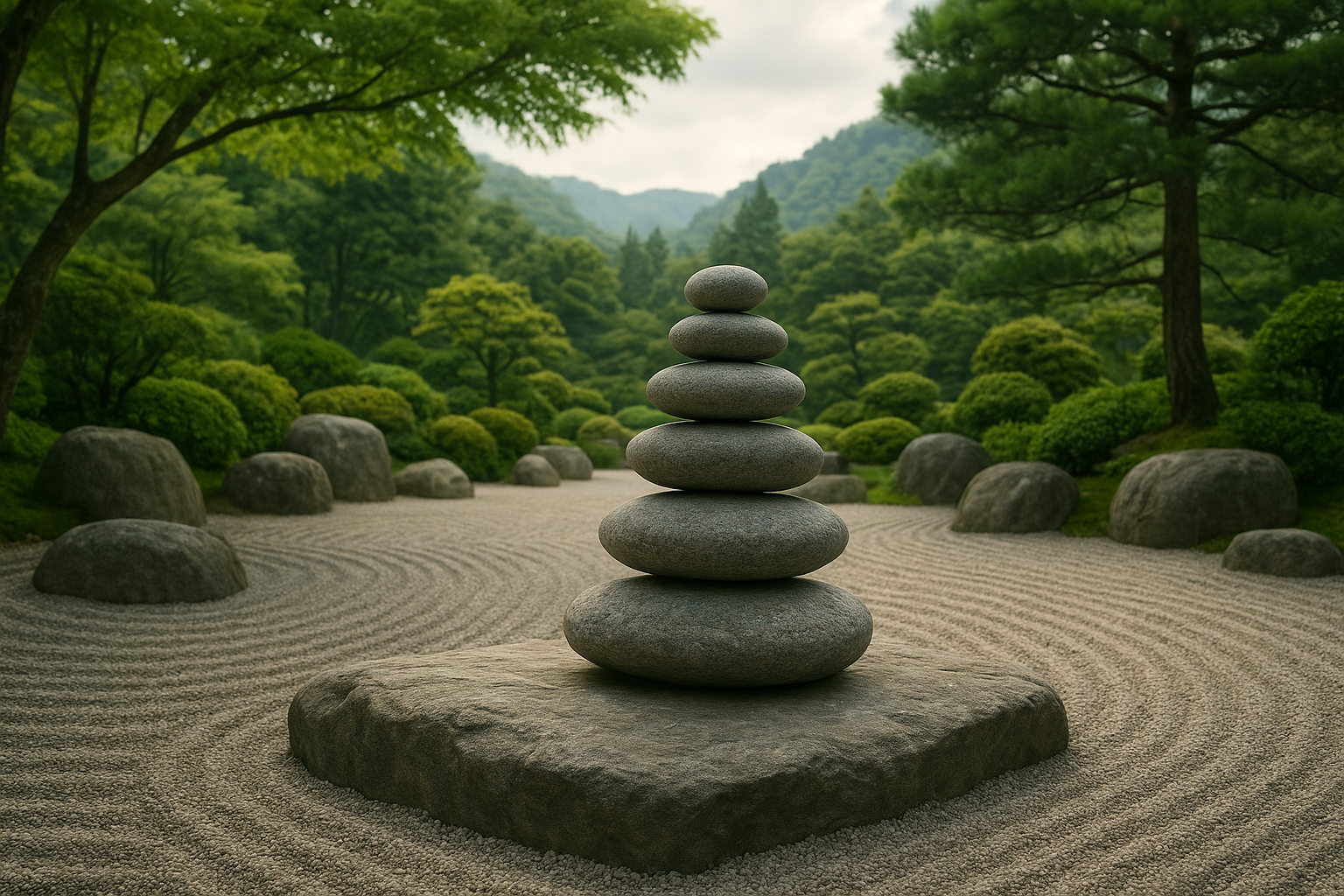The Stone Sutra: Reading Zen in the Landscape
In the quiet whispers of nature, where the wind caresses ancient stones and leaves rustle in meditative harmony, lies the essence of Zen philosophy. The landscape becomes not merely a backdrop but a sacred text—a ‘stone sutra’ etched with lessons of simplicity, impermanence, and harmony. Join us as we delve into the profound relationship between Zen and the natural world, where each element becomes a teacher, guiding us towards enlightenment.
The Zen of Nature
Zen Buddhism, originating in China and perfected in Japan, finds a deep resonance in nature. The very act of observing a landscape invites a contemplative approach characteristic of Zen. As Japanese monk Dogen Zenji, the founder of Soto Zen, once said, Mountains and waters right now are the actualization of the ancient Buddha way.
(Shambhala Publications)
This philosophy sees the natural world as a mirror reflecting the true self. It urges individuals to perceive beyond the superficial, to understand the underlying interconnectedness of all life. Zen encourages the practice of mindfulness through immersion in the environment, transforming simple acts like gazing at a stone or breathing under a tree into profound spiritual exercises.
The Elements of a Zen Landscape
- Stones: Representing eternal permanence amidst the transient flow of life, stones are often central to Zen gardens. Their placement is intentional, inviting contemplation and embodying the essence of wabi-sabi—beauty in imperfection and impermanence.
- Water: The presence of water, whether in the tranquility of a pond or the gentle flow of a stream, symbolizes life’s ever-changing nature. Water in a Zen garden is a metaphor for purity and the cyclical passage of time.
- Plants: Meticulously chosen and maintained, plants in a Zen landscape remind us of growth, resilience, and adaptability. Each leaf or blossom is a lesson in mindfulness and appreciation of life’s fleeting moments.
- Paths: Pathways in a Zen garden do not necessarily lead from one point to another but rather encourage thoughtful wandering and reflection. They embody the journey of life, inviting the traveler to ponder each step’s significance.
The Practice of Shakkei
The Japanese concept of shakkei, or “borrowed landscape,” epitomizes the Zen approach to designing space. It involves incorporating elements from the surrounding natural landscape into the garden’s design, blurring the lines between cultivated and wild nature. This technique not only enhances aesthetic pleasure but also deepens the integration of Zen principles into everyday life, reminding us to embrace our environments as they are, seeing beauty and value in the natural world.
The best-known Zen master of landscape gardening, Muso Soseki, said, “The heart of the garden can only be understood by the heart of the gardener.” Understanding Zen in the landscape involves not only seeing but feeling. It requires openness to the whispers of the rocks, the songs of the rivers, and the breath of the trees.
The Path to Enlightenment
Engaging with the landscape as a manifestation of Zen Buddhism encourages a return to simplicity and mindfulness, essential teachings that have resonated through centuries. It calls for an active participation in the natural world, fostering a sense of unity and teaching the fluidity of existence.
Modern adherents of Zen and enthusiasts of mindfulness alike find solace and wisdom in this interaction. In an era where technology often disengages us from our immediate environments, reconnecting with nature serves as a reminder of our intrinsic ties to all living things. As Rinzai Zen master Shunryu Suzuki eloquently put it, In the beginner’s mind there are many possibilities, but in the expert’s mind there are few.
This openness is precisely what engaging with the stone sutra, or natural landscape, cultivates.
Conclusion
The stone sutra within the landscape is an invitation to observe, reflect, and grow. It is a living scripture, offering insights into the Zen way of being. Through the harmonious balance of elements, it encourages the practice of mindfulness, simplicity, and an appreciation for the ephemeral beauty of life.
By embracing the teachings found in nature, one embarks on a journey towards enlightenment—a path paved with stones, watered by streams, and shaded by ancient trees. In doing so, the landscape becomes a sanctuary of peace and wisdom, ever ready to teach those willing to listen.

